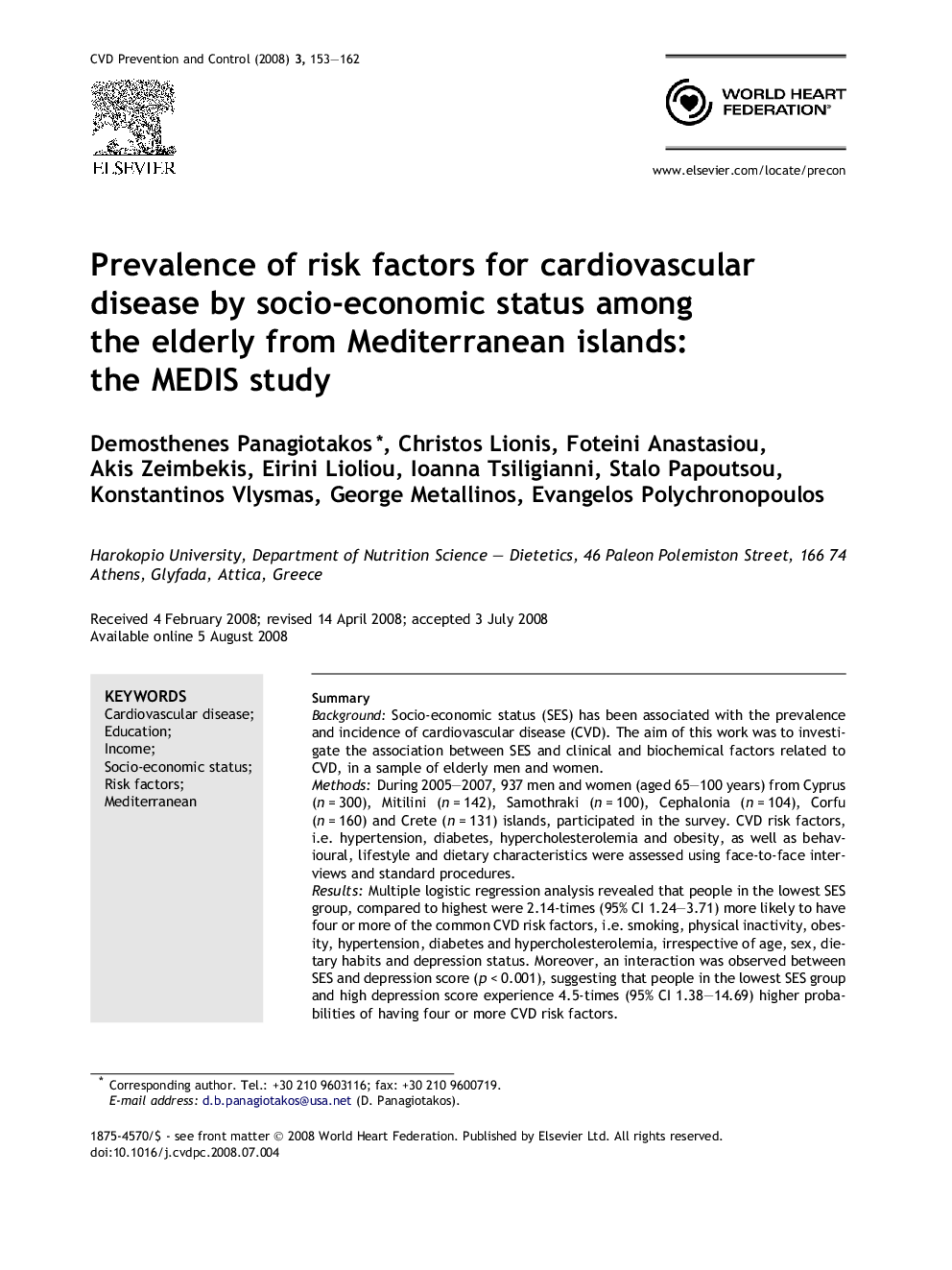| Article ID | Journal | Published Year | Pages | File Type |
|---|---|---|---|---|
| 2909756 | CVD Prevention and Control | 2008 | 10 Pages |
SummaryBackgroundSocio-economic status (SES) has been associated with the prevalence and incidence of cardiovascular disease (CVD). The aim of this work was to investigate the association between SES and clinical and biochemical factors related to CVD, in a sample of elderly men and women.MethodsDuring 2005–2007, 937 men and women (aged 65–100 years) from Cyprus (n = 300), Mitilini (n = 142), Samothraki (n = 100), Cephalonia (n = 104), Corfu (n = 160) and Crete (n = 131) islands, participated in the survey. CVD risk factors, i.e. hypertension, diabetes, hypercholesterolemia and obesity, as well as behavioural, lifestyle and dietary characteristics were assessed using face-to-face interviews and standard procedures.ResultsMultiple logistic regression analysis revealed that people in the lowest SES group, compared to highest were 2.14-times (95% CI 1.24–3.71) more likely to have four or more of the common CVD risk factors, i.e. smoking, physical inactivity, obesity, hypertension, diabetes and hypercholesterolemia, irrespective of age, sex, dietary habits and depression status. Moreover, an interaction was observed between SES and depression score (p < 0.001), suggesting that people in the lowest SES group and high depression score experience 4.5-times (95% CI 1.38–14.69) higher probabilities of having four or more CVD risk factors.ConclusionsAn inverse relationship between SES and factors related to CVD risk exists among elderly people. Our findings underline the importance of focused preventive strategies, especially, among low SES people, in order to improve the quality of life among elderly individuals.
